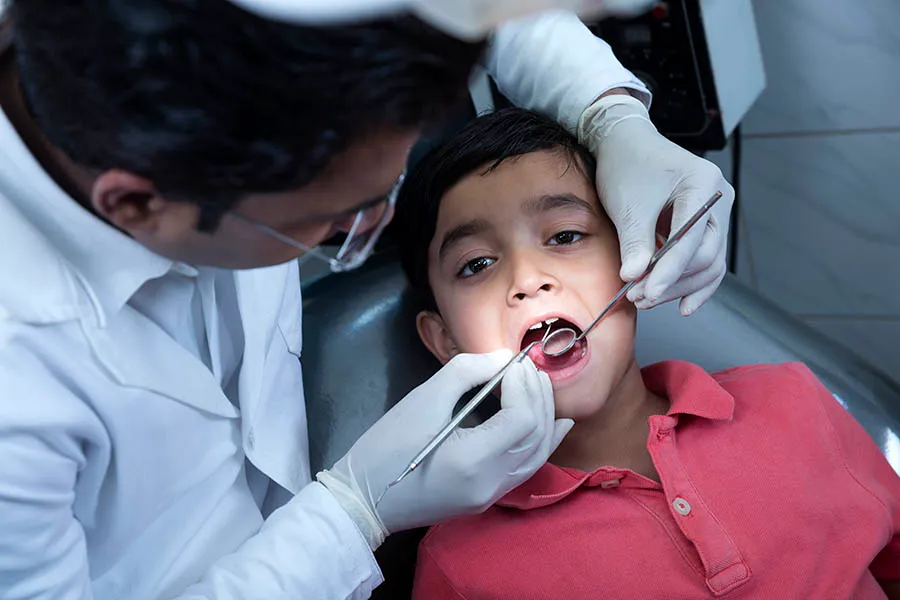Children’s Dental Health: Preventing Cavities in Baby Teeth

Children’s Dental Health: Preventing Cavities in Baby Teeth
Children’s love for chocolate and sugary treats often leads to cavities in their baby teeth, a growing concern that can impact their oral health long-term. As of September 2, 2025, dental experts are urging parents to prioritize early dental care to prevent cavities and ensure healthy tooth development. Dr. Gokula Krishnan, a leading dentist, emphasizes that while baby teeth, also known as milk teeth, naturally fall out, neglecting cavities can weaken future permanent teeth and lead to serious complications. This article explores the causes of cavities in children, the importance of early intervention, and practical strategies to maintain dental health, ensuring strong teeth for life.
Understanding Baby Teeth and Cavities
Baby teeth, or primary teeth, typically erupt between six and twelve months after a child’s birth. These teeth play a crucial role in chewing, speech development, and guiding permanent teeth into their correct positions. However, children’s fondness for sugary foods like chocolate, candies, and sweetened milk can lead to cavities, also known as dental caries. According to a 2024 study by the Indian Dental Association, 60% of children aged 3–6 in India have at least one cavity in their baby teeth, largely due to high sugar consumption. Cavities form when bacteria in the mouth feed on sugars, producing acid that erodes tooth enamel, the protective outer layer of teeth.
Dr. Krishnan explains that parents often underestimate the importance of baby teeth, assuming they are temporary and do not require serious attention. “Many parents believe that since milk teeth fall out naturally, cavities aren’t a big deal. But untreated decay can lead to pain, infections, and damage to the developing permanent teeth,” he says. A 2025 Journal of Pediatric Dentistry report notes that untreated cavities in primary teeth increase the risk of misalignment and enamel defects in permanent teeth by 25%, underscoring the need for proactive dental care from an early age.

The Risks of Ignoring Cavities
Neglecting cavities in baby teeth can have significant consequences. Early-stage cavities, if caught promptly, can often be cleaned and repaired with minimally invasive treatments like fillings. However, if left untreated, decay can progress to the tooth’s pulp, necessitating more complex procedures like root canal treatment or, in severe cases, tooth extraction. Dr. Krishnan warns, “If decay reaches the pulp, it can cause severe pain and infections, potentially affecting the surrounding bone and developing permanent teeth.” A 2024 Pediatric Dental Journal study found that children with untreated cavities are 30% more likely to experience dental abscesses, which can lead to swelling, fever, and even hospitalization in rare cases.
Moreover, cavities weaken the structure of baby teeth, reducing their strength and functionality. This can disrupt chewing, leading to nutritional deficiencies, and affect speech development, causing delays in language skills. The aesthetic impact of decayed teeth can also lower a child’s self-esteem, particularly as they enter school age. Parents must recognize that while baby teeth are temporary, their health directly influences the foundation for permanent teeth, making early intervention critical to long-term oral health.
Causes of Cavities in Children
The primary culprit behind cavities in children is excessive sugar consumption, particularly from chocolates, candies, and sugary beverages. These foods provide fuel for harmful bacteria like Streptococcus mutans , which thrive in the mouth and produce acid that erodes enamel. Another common practice, allowing children to sleep with a bottle of milk or juice, exacerbates the problem. Milk contains lactose, a natural sugar, which can pool in the mouth overnight, creating an ideal environment for bacterial growth. A 2025 Indian Journal of Dentistry study found that children who habitually sleep with a bottle have a 40% higher risk of developing early childhood caries (ECC).
Poor oral hygiene also plays a significant role. Many children do not brush their teeth effectively or consistently, allowing plaque—a sticky film of bacteria—to accumulate. Baby teeth have thinner enamel than permanent teeth, making them more susceptible to decay. Additionally, genetic factors, such as enamel strength, and dietary habits, like frequent snacking, increase cavity risk. Urbanization has worsened these trends, with a 2024 Economic Survey of India noting a 15% rise in sugary snack consumption among children due to increased availability of processed foods.
Preventing Cavities: Early Dental Care
Preventing cavities begins with instilling good oral hygiene habits from an early age. Dr. Krishnan recommends that children start brushing their teeth twice daily—morning and evening—as soon as their first tooth erupts, typically around six months. “Use a small, soft-bristled toothbrush and a smear of fluoride toothpaste the size of a rice grain for children under 3, and a pea-sized amount for those aged 3–6,” he advises. Fluoride strengthens enamel, reducing cavity risk by 25%, according to a 2024 Journal of Dental Research study. Parents should supervise brushing until children develop the dexterity to do it effectively, usually around age 7.
Dietary changes are equally critical. Reducing sugary foods and drinks, particularly chocolates and sodas, can significantly lower cavity risk. Dr. Krishnan suggests offering healthier alternatives like fruits, vegetables, and unsweetened dairy products. For instance, an apple provides fiber and promotes saliva production, which naturally cleanses teeth. Avoiding bedtime bottles of milk or juice is essential, as prolonged exposure to sugars during sleep accelerates decay. Instead, offer water if a child needs a nighttime drink. Regular dental checkups, ideally three times a year, allow for early detection and treatment of cavities, preventing progression to more invasive procedures.
Treatment Options for Cavities
When cavities are detected early, treatment is straightforward and minimally invasive. Dr. Krishnan explains, “If the decay is in its early stages, we can clean the affected area and apply a filling to restore the tooth.” Fillings, typically made of composite resin or glass ionomer, prevent further decay while maintaining tooth function. For more advanced cavities that reach the tooth’s pulp, a root canal treatment may be necessary to remove infected tissue and save the tooth. In severe cases, extraction may be the only option, though this is avoided whenever possible, as premature loss of baby teeth can lead to misalignment of permanent teeth.
Preventive treatments, such as dental sealants, can further protect baby teeth. Sealants are thin, protective coatings applied to the chewing surfaces of molars, reducing cavity risk by 80%, according to a 2025 American Dental Association report. Fluoride varnishes, applied during dental visits, strengthen enamel and are particularly effective for young children. These interventions, combined with consistent oral hygiene, can significantly reduce the need for invasive treatments and preserve the health of both primary and permanent teeth.
The Role of Parental Involvement
Parents play a pivotal role in safeguarding their children’s dental health. Educating children about the importance of brushing and limiting sugary snacks sets the foundation for lifelong habits. Dr. Krishnan advises parents to make brushing fun, using colorful toothbrushes or flavored fluoride toothpaste (approved by dentists) to encourage compliance. Modeling good oral hygiene practices, such as brushing twice daily and visiting the dentist regularly, reinforces their importance. A 2024 Pediatric Dentistry study found that children whose parents actively supervise oral hygiene are 50% less likely to develop cavities by age 5.
Community initiatives, such as school-based dental health programs, can further support parents. In India, programs like the National Oral Health Programme aim to provide free dental screenings and education in schools, though coverage remains limited in rural areas. Parents should also be aware of early cavity signs, such as white spots on teeth, sensitivity, or visible holes, and seek dental care promptly. By fostering a proactive approach, parents can prevent minor issues from escalating into major dental problems.
Long-Term Benefits of Early Dental Care
Investing in children’s dental health from an early age yields significant long-term benefits. Healthy baby teeth ensure proper chewing, supporting nutrition and growth, and facilitate clear speech, boosting confidence and social development. They also guide permanent teeth into their correct positions, reducing the need for orthodontic treatments later. A 2025 Journal of Dental Research study found that children with healthy primary teeth have a 20% lower risk of needing braces or other orthodontic interventions by adolescence.
Moreover, early dental care instills lifelong habits that prevent chronic oral health issues. Adults who maintain good oral hygiene from childhood are less likely to develop gum disease or tooth loss, which affect 60% of Indian adults, according to the 2024 Indian Dental Association report. By addressing cavities in baby teeth and promoting healthy habits, parents and caregivers can set children on a path to optimal oral health, reducing healthcare costs and improving quality of life.
Comment / Reply From
No comments yet. Be the first to comment!






